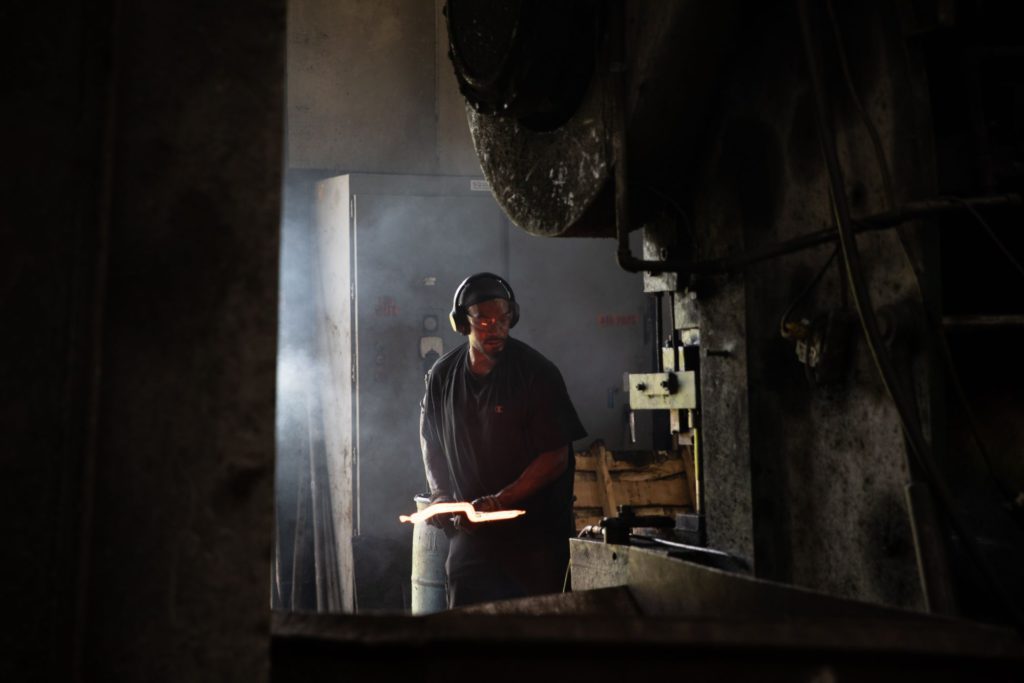(Bloomberg) — A measure of U.S. manufacturing advanced in November as new orders accelerated and factories ramped up production and hiring.
The Institute for Supply Management’s gauge of factory activity increased to 61.1 — in line with expectations — from 60.8 a month earlier, according to data released Wednesday. Readings above 50 indicate manufacturing is expanding.
The group’s measure of factory production jumped to a seven-month high and new orders accelerated, underscoring how resilient consumer demand for goods and solid business investment have underpinned the manufacturing recovery.
“The U.S. manufacturing sector remains in a demand-driven, supply chain-constrained environment, with some indications of slight labor and supplier delivery improvement,” Timothy Fiore, chair of the ISM manufacturing business survey committee, said in a statement.
“All segments of the manufacturing economy are impacted by record-long raw materials and capital equipment lead times, continued shortages of critical lowest-tier materials, high commodity prices and difficulties in transporting products,” Fiore said.
The average lead time for materials used in the production process held at a record 96 days. Capital equipment lead times continued to grow, with the average now at 160 days, the most since 1989.
Average lead time for supplies used for maintenance, repairs and operations climbed to 49 days, also a record.
The ISM figures are consistent with separate data showing firmer manufacturing results in Europe and China. Despite improvements last month at euro-area and Chinese factories, input shortages, high prices and supply-chain woes remain headwinds for producers.
The ISM’s U.S. employment gauge also rose to a seven-month high, suggesting the pace of factory hiring picked up last month. While the sector has made steady progress toward returning to pre-pandemic employment levels, it has faced similar hiring challenges as other industries in attracting and retaining talent.
The government’s jobs report on Friday is anticipated to show manufacturers added 42,000 workers in November, following 60,000 in October. Across all industries, employers are expected to have added over half a million jobs.
Meantime, factories continue to struggle with materials shortages, high input prices and transportation bottlenecks. A gauge of supplier deliveries, while somewhat improved last month, remains extremely elevated.
Thirteen manufacturing industries reported growth in November, led by apparel, furniture, and electrical equipment and appliances.
Select ISM Industry Comments
“International component shortages continue to cause delays in completing customer orders. Backlog continues to increase.” – Computer & Electronic Products
“Large volume drops due to chip shortage.” – Transportation Equipment
“All input costs are going up considerably, across the board.” – Food, Beverage & Tobacco
“Business is strong but meeting customer demand is difficult due to a shortage of raw materials and labor.” – Furniture
“We are still seeing shortages with various metals. Plastic resins seem to be slowly improving. Electronic component lead times are still moving out.” – Electrical Equipment & Appliances
“While steel plate and hot-rolled coil pricing seems to be approaching a plateau, the biggest challenge we have at the moment is finding qualified workers.” – Fabricated Metals
Still, there are some signs of improvement. A measure of order backlogs fell to its lowest level since the start of the year, indicating backlogs are growing at a slower pace. The group’s prices paid index — though still very high — declined for the first time in three months, a trend that could continue if crude oil prices decline further.
(Adds average lead times)
More stories like this are available on bloomberg.com
©2021 Bloomberg L.P.











